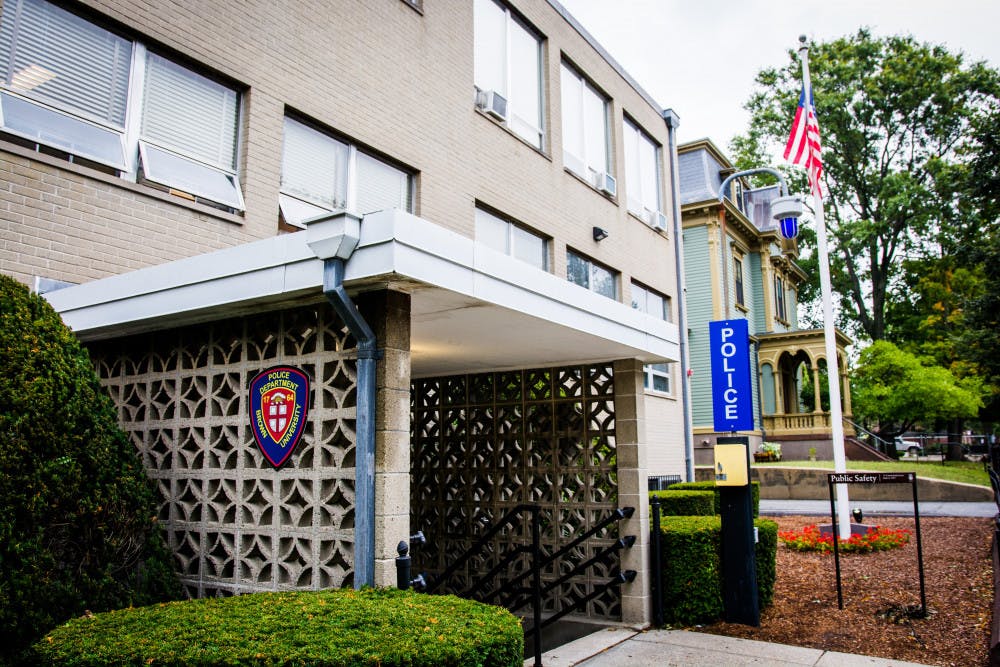The Department of Public Safety has altered its policy on racial descriptions for crime alerts over the past year, excluding suspects’ race in every campus alert since October 2015.
In an email to The Herald, Chief of Police Mark Porter and Deputy Chief of Police Paul Shanley maintained that this does not constitute a policy change, though nearly all publicly available crime alerts before that date mention a suspect’s race to some degree.
“We have no formal Department of Public Safety policy in place that either prohibits the inclusion of race or mandates that race be included in suspect descriptions,” Porter and Shanley wrote. As a matter of practice, the department includes the categorization only when there is certainty with regard to race or if it “adds value as part of a complete and thorough description” of a suspect, they added.
With race excluded, notifications typically include a suspect’s gender, age, build and general appearance.
Using a suspect’s race in a crime alert may be unnecessary for a number of reasons, including possible confusion in racial identification and the fact that “vague descriptions can reinforce stereotypes,” Porter and Shanley wrote. These stereotypes can foster hostility toward some members of the community, they added.
Several students called for the exclusion of race in DPS reports during negotiations surrounding the Diversity Inclusion Action Plan last year. In addition, race has proven problematic as an identifier in several instances at schools across the country — most notably at Yale, where a black student was forced to the ground at gunpoint for “fit(ting) the description of a suspect” mentioned in a campus alert in January 2015, the Yale Daily News reported.
“When talking about active searches for suspects, then I think anyone would agree that any superficial categorization is necessary,” said Stefano Bloch, a presidential diversity research associate in urban studies. “But the fact is in most cases race is not a practical category of identification … long after a crime has occurred,” he added, noting studies showing that victims are often unable to completely identify suspects in situations of duress.
It is important to consider the department’s motivation in excluding race, Bloch said, as this shift could either be seen as a heightened awareness of racial bias at an institutional level or “an attempt by an institution to appear colorblind regardless of the (racially biased) policies” that remain in place. “If removing racial identifiers is akin to the perpetuation of a colorblind society then it serves no purpose other than to pacify the Brown community,” he added.
While they stressed that crime alert practices have not been influenced by any specific instances, Porter and Shanley wrote that the department has “certainly heard from students over the years” who have raised concerns about the possibility of misplaced suspicion resulting from racial descriptions in community crime alerts.
Harjasleen Malvai ’17.5 said she supports the change because it shows a willingness on the part of DPS to listen to student demands. “If they have responded to this, there’s a lot more potential for them to be open to requests from Brown students in the future,” she said.
Iván Hofman ’19 said he was also optimistic about the possibility of reform but added that DPS “should do all that is needed so that race and other factors that stigmatize specific communities are taken into consideration.”
Steven Brown, executive director of the American Civil Liberties Union of Rhode Island, expressed uncertainty about the perceived policy change.
“Racial profiling is certainly a very legitimate issue for a campus to be concerned about,” Brown said. “But if the point of these reports is to help identify suspects, I’m not sure it makes much sense to exclude race from the description.”
Though race is now rarely included in crime alerts, DPS still makes note of racial categorizations internally, Shanley wrote. Due to this, Bloch said, withholding racial information from the community may not actually be as impactful because “it is the police in fact whose profiling has more deadly consequences than that of the general public.”





